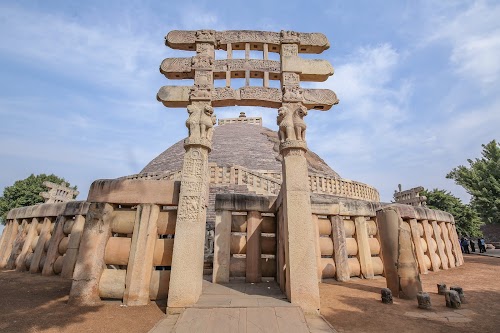
Sanchi Stupa
Bhopal, India
- Explore the Great Stupa and its gateways.
- Learn about the history of Buddhism in India.
- Meditate in the peaceful surroundings.
- Photograph the intricate carvings on the Toranas.
- Visit the Archaeological Museum to see artifacts.
Known for:
Description:
Sanchi Stupa, a UNESCO World Heritage site, is a magnificent complex of Buddhist monuments located near Bhopal. The Great Stupa, a massive hemispherical dome, stands as a testament to ancient Indian art and architecture. Explore intricately carved gateways (Toranas) depicting scenes from the Jataka tales and Buddha's life. The serene atmosphere and historical significance make Sanchi a captivating destination for history buffs, spiritual seekers, and anyone interested in India's rich cultural heritage. Discover smaller stupas, temples, and monasteries that dot the hilltop, offering a glimpse into the evolution of Buddhist art and philosophy over centuries. The Archaeological Museum nearby houses a fascinating collection of artifacts discovered at the site.
History:
Emperor Ashoka commissioned the Great Stupa in the 3rd century BCE after his conversion to Buddhism. Initially a modest earthen structure, it was later expanded and embellished by subsequent rulers of the Shunga, Satavahana, and Gupta dynasties. The elaborate gateways were added in the 1st century BCE, showcasing intricate carvings that narrate the Buddha's life and previous incarnations. Abandoned for several centuries, Sanchi was rediscovered in 1818 by British officer General Taylor. Extensive restoration work in the early 20th century, led by Sir John Marshall, brought the site back to its former glory, revealing its historical and artistic significance to the world. Today, Sanchi stands as one of the oldest and most important Buddhist monuments in India.